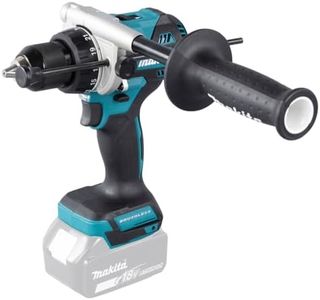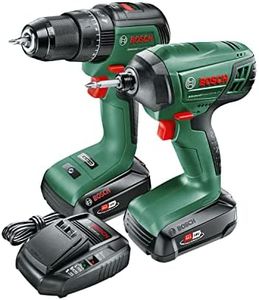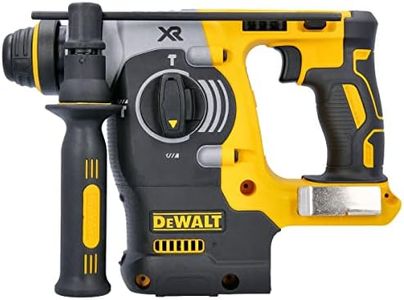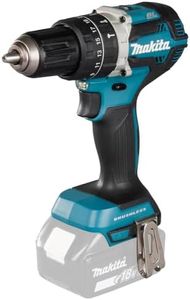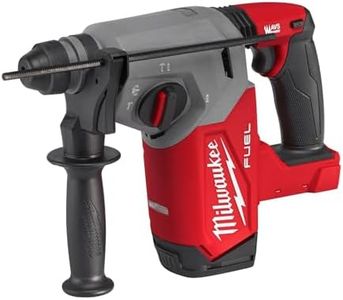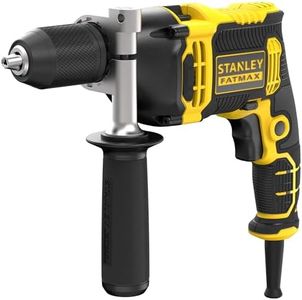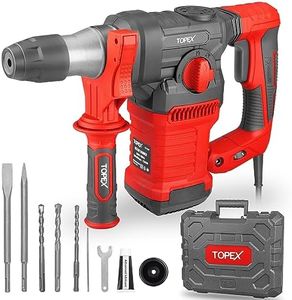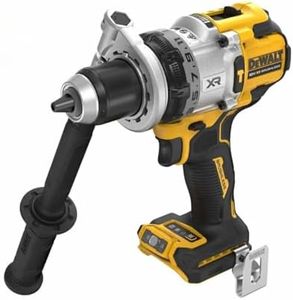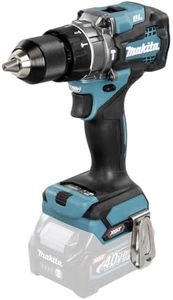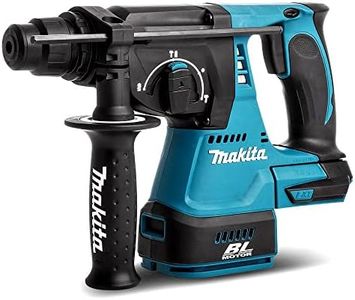We Use CookiesWe use cookies to enhance the security, performance,
functionality and for analytical and promotional activities. By continuing to browse this site you
are agreeing to our privacy policy
10 Best Hammer Drills
From leading brands and best sellers available on the web.By clicking on a link to a third party's website, log data is shared with that third party.
Buying Guide for the Best Hammer Drills
When choosing a hammer drill, it's important to think about what kind of tasks you plan to tackle, such as drilling into wood, metal, or harder materials like concrete or masonry. Hammer drills combine rotary drilling with a hammering action, making them more effective for tougher jobs compared to standard drills. By considering the type and frequency of your projects, you can make a more informed decision on which features and specifications are best suited to your needs.Power SourceHammer drills come in corded (electric) and cordless (battery-powered) versions. Corded drills tend to provide more consistent power and are better suited for heavy-duty, long-duration work, while cordless models offer more portability and convenience but may require battery changes or charging. If you often work in places with easy access to power outlets or need to drill many holes in hard materials, a corded model may be better. For mobility and lighter jobs, especially in places without easy power access, a cordless hammer drill is a great option.
Hammering Action (Blows Per Minute - BPM)Blows Per Minute (BPM) measures how many times per minute the hammer mechanism strikes. Higher BPM means the drill can break through tougher materials like concrete or brick more efficiently. For general use or lighter materials, a lower BPM will suffice, while frequent masonry work benefits from higher BPM values. If you expect to drill masonry, look for a higher BPM, but for occasional use or softer materials, mid-range BPM should be enough.
Drill Speed (Revolutions Per Minute - RPM)Revolutions Per Minute (RPM) refers to how fast the drill spins. Higher RPM is good for quickly boring holes in softer materials, while lower speeds can be useful for high-torque tasks or drilling into tougher surfaces. If versatility is important—working with wood, metal, and masonry—choose a model with variable speed settings so you can adjust the RPM to match your current task. For specialized or repetitive masonry work, focus on torque and hammer action over top RPM.
Chuck Size and TypeThe chuck is the part that holds the drill bit, and its size (commonly 1/4-inch, 3/8-inch, or 1/2-inch) determines the maximum bit diameter you can use. Larger chucks allow bigger, more robust bits, which are better for heavy-duty work. Keyless chucks offer speedy bit changes by hand, while keyed chucks allow tighter grip for demanding tasks. If you plan to use larger bits or switch bits frequently, pick a suitable chuck size and type for your workflow.
Torque and Motor PowerTorque refers to the turning force of the drill, and more torque means it can better handle tough or large-diameter drilling. Motor power, usually measured in amps (corded) or volts (cordless), indicates the overall strength of the drill. Heavy-duty jobs (thick concrete, large holes) require higher torque and power, while lighter work is fine with lower values. Match the torque and motor power to the toughest task you’ll be doing regularly.
Weight and ErgonomicsThe weight and design of a hammer drill affect your comfort, especially if you’ll use it for long periods or in tight spaces. Lighter models reduce fatigue but may have less power, while heavier drills are tougher but can be harder to manage overhead or on ladders. Ergonomic handles, vibration control, and balanced design also improve usage comfort. Choose a drill that feels comfortable in your hands and isn’t so heavy that it becomes hard to use effectively for your longest tasks.
Additional Features (Clutch settings, LED lights, etc.)Some hammer drills offer extra features like adjustable clutch, LED work lights, or side handles for better control. Clutch settings prevent overdriving or stripping screws, which helps if you plan to use the drill for fastening. Built-in lighting is useful in dark or awkward spaces. Side handles offer better stability and safety in tougher drilling. Consider which add-ons will make your work easier, faster, or safer based on your regular projects.
